By R. Chandra Prakash
During our several meetings with Mysuru Urban Development Authority (MUDA) in connection with Draft of Mysuru-Nanjangud Master Plan-2031 time and again we were assured, both by the Master Plan consultants and the MUDA top officials, that their main objective was not to allow Mysuru go the Bengaluru way. That was between 2013-14.
Now the approved Master Plan is under implementation for nearly past 5 years and the conditions in and around Mysuru, as they stand today, do not seem to support the assurances made by the concerned authorities back then. It looks as though Mysuru has already gone Bengaluru way! To understand this stark reality, one has to first understand what is meant by Bengaluru way? Briefly, the Bengaluru way means a ‘failed city.’
A ‘Failed City’
In a very recent Editorial, a leading newspaper of the State has this to say about our capital city — “For about a quarter of a century now, one Karnataka Chief Minister after another has been promising Bengalureans the moon or rather promising to turn it into a Singapore, a Dubai, a ‘Smart City’, or other dreamscapes. In reality, though Bengaluru has remained closer to a cratered moon and every aspect of the city and life in it has deteriorated over the years. We are rapidly hurtling towards a point of no return…
…Bengaluru is a failed city in nearly every sense of the term. Not even a single stretch of road is free of potholes, walkable footpaths are non-existent in most areas, building violations and illegal constructions are the order of the day, waste management is a disaster, lakes are fast disappearing or are utterly polluted, the storm-water drain system has been destroyed by the builder-official nexus and the city gets flooded with every downpour and potable water is still a pipe-dream for many. Even Namma Metro continues to progress at a snail’s pace and will not have the extensive presence it must have to relieve the city of its traffic mess until well after 2030. Civic Bodies and utility agencies remain rampantly corrupt and inefficient and promises to reform them remain unfulfilled.”
Above quote substantially establishes the pathetic conditions prevailing at present in Bengaluru. But why are we moaning this condition of Bengaluru when most of our major urban centres, not excluding the national capital, are in similar condition? To understand this we will have to very briefly visit the unique place of Bengaluru in our State’s and national history.

A city with a touch of Europe!
Magadi Kempegowda is credited with laying the foundation for this city in 1537 with a mud fort. His vision for the city’s expansion could be seen in the boundary pillars he had erected nearly 500 years ago! If Hyder Ali waged a war to claim the control of Bengaluru, his son Tipu Sultan, born in Devanahalli, had left his Palace as a memory of his relationship with this city. The British found out that Bangalore (the earlier format of the name) with its higher altitude and thousands of lakes around had a salubrious weather all round the year. Hence, they established in Bangalore a very important Cantonment.
A large number of British citizens, including Winston Churchill, lived here. Europeans and Anglo-Indians, who worked and lived in the neighbouring Kolar Gold Field [KGF] gold mines patronised Bangalore for their social and commercial requirements. Thus, this city became an active centre for the Europeans and the Anglo-Indian population.
Consequently, Bangalore acquired a shade of an European town! The Parade Ground and the surrounding complexes of Cinema Houses, the Brigade Road, the Commercial Street and the Mahatma Gandhi Road were full of European touch.
The contributions of the Wadiyars was also substantial in making Bangalore what it was. Even when Mysuru City was the capital of erstwhile Mysore State, Wadiyars had developed Bangalore with special interests. Town Planning was the fulcrum around which this city grew. They planned the residential layouts with parks, well laid out roads, road side trees, conservancy lanes, underground drainage and electricity. They also built the Palace, buildings with gothic architecture and huge gardens. Lalbagh is an old botanical garden in Bengaluru. Said to be first planned and laid out during the Dalavaiship of Hyder Ali and later managed under numerous British Superintendents, its Glass House is a model for other gardens. Huge Cubbon Park is another landmark of this city. No surprise that over a period this city came to be known as a Garden City.
As part of their progressive administrative policies for the State, Wadiyars had implemented Regionally Balanced Socio-Economic Policies. As per this, suitable industrial units were located in different parts of the State. Bengaluru had got its own share in the form of Government Soap factory, Government Electric Factory and many others. However, industrial development being part of planned city development never caused adverse effects on the urban life. Rather it contributed to its socio-economic dynamics.
Post Independence – Dynamic Political Leadership
During the first two decades after independence, the State had the good fortune of a very dynamic political leadership. They were men of eminence and integrity coupled with high degree of local concerns. Politicians such as Kadidal Manjappa, K. Hanumanthaiah and Nijalingappa had national prominence both in the Government and the Indian Congress Party. They gave importance to the socio-economic development of the State in general and the Bangalore city in particular by choosing it as the State capital under great odds. Maintenance of the heritage of the city was given its due prominence. Location and the architect of Vidhana Soudha stand testimony to the political culture of the time.
A National Industrial Hub
Because of very conducive socio-economic-political environment, Bengaluru attracted a series of Public Sector enterprises (many connected with the defence) like HAL, HMT, ITI, BEL, BHEL, Railway Wheels Factory, DRDO, ISRO and many others, which had huge campuses of their own. Even Private Sectors like Kirloskar, MICO and Kisan had put up a few important units in and around this city. Foreign collaborations in some of these industries gave Bangalore an international image. Over a time, the city acquired the honour of having Asia’s largest Industrial Estate of ancillary and small units in Peenya. However, industrialisation of Bangalore did not damage the landscape of the city as either they were non-polluting in nature or they were located away from the residential layouts.
Industrialisation enhanced the employment prospects of the citizens. As other major cities of the country had become highly congested and polluted, Bangalore glittered for its elegance, gardens and laid back large city. All over the country, Bangalore acquired prominence as a well-planned and clean city and a sophisticated large urban centre of the country. So much so, during 1980s when well-established business houses and industrial units found the Communist rule in Calcutta oppressive, many of them shifted to Bengaluru. Businessmen and Business Houses from Bombay and Delhi found Bangalore an attractive investment destination as also a very tantalising living place. By the eighties, Bangalore was turning into a large industrial, commercial and a residential city of the country.
[To be continued]



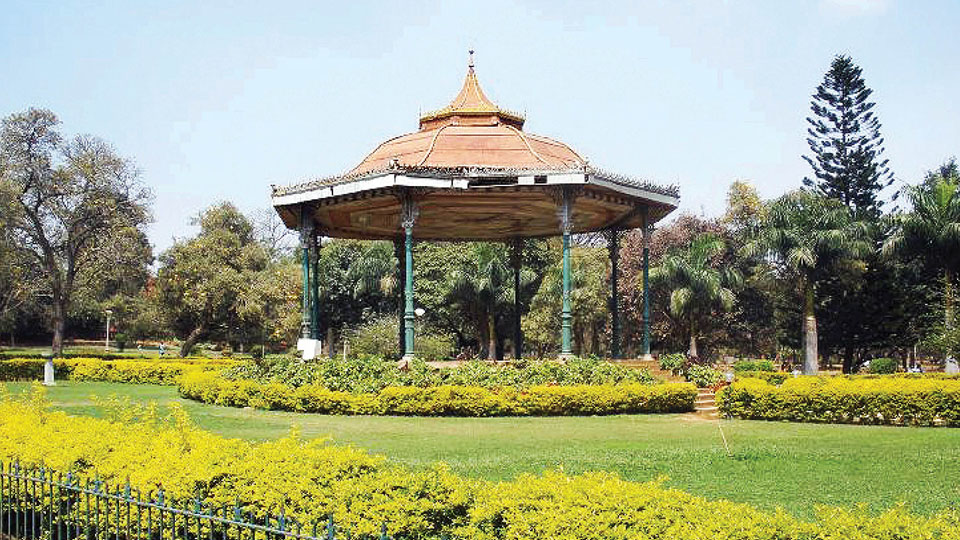
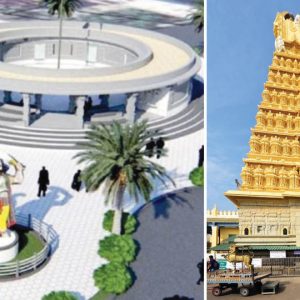
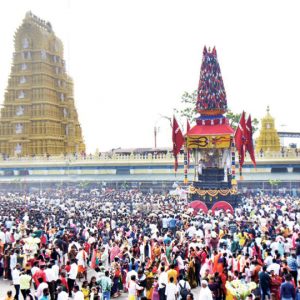
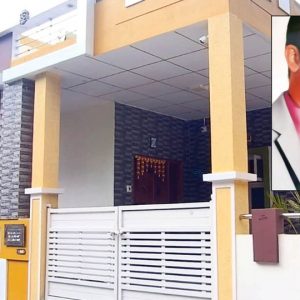
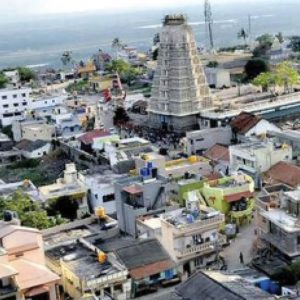
This is an example of a poorly written article. Facts are not properly stated or analysed, and in parts of the article, it sounds utterly nonsensical.
All the Dewans of Wadiyars from Sir K Seshadri Iyer, had permanent residences in Bengaluru, and indeed Nalwadi Wadiyar’s English tutors resided in Bengaluru, where Nalwadi spent a large part of a year , from his childhood to his later years. That was the reason, even in the pre-capital years, Bengaluru was developed so orderly in terms of its parks, extensions and iconic buildings to form a Garden City. The engineer-Dewan Sir MV who panned parts of the extensions like Jayanagar, ardently wanted to preserve the Garden element of the City.
Before focusing on the industrial development that Bengaluru reflected particularly in 1950s and 1960s, which was responsible for the later destruction of this once Garden City, I should add, the then CMs Kengal and Nijalingappa, pioneered Mysore ( Karnataka)-style political corruption that has since bedevilled the state. Their contemporary in the neighbourhood Tamil Nadu, Kamaraj in contrast ran a very clean government. Kengal, engineered corruption on a massive scale associated with large building works, such as Vidhana Soudha, in whose construction , he reportedly got large kick backs, through his contractor friends who got the contracts for building Vidhana Soudha. Nijalingappa , on the other hand added crores of Rupees crores as his bank account involved in approving the locations and development of the state-owned factories like the HMT, BEL and ITI , and their residential complexes. The HAL which was operating since WWII, was expanding rapidly too.
The locations of these three major factories could have been tens of miles of away from the Bengaluru city proper, as there was no need to locate them just a few miles from the then City borders. Nijalingappa promised jobs for Bangaloreans as the reason for locating these industries near the City perimeters, which was sheer nonsense as these were Central Government-funded industries, which meant that any qualified Indian, from any part of India had equal right with a Bengalorean to apply to secure the job. In those factories. Indeed they did in massive numbers. Unlike Kamaraj who used to demand and get quotas of jobs for Tamilians, , Nijalingappa, a mere nodding gnome to Congress leaders at the Centre, simply lied about Bengaloreans getting jobs in these factories, and only a very few of them were successful. The locations for these factories forced by the Centre were to help Indians from the neighbouring states of: Tamil Nadu, Kerala and Andhra Pradesh to get jobs there and settle in the City.
About the author’s claim: ’However, industrialisation of Bangalore did not damage the landscape of the city as either they were non-polluting in nature or they were located away from the residential layouts’
If you had visited Benagluru when the above 3 factories were in full swing, operating 3 shifts-early morning, mid morning and mid-afternoon slots, you would have seen hundreds of the buses from these 3 factories-out numbering the BTS buses at any time, It was no wonder the roads developed pot holes very often, and cyclists like me, who worked as an engineer in a private company then had arduous journey to my company every day, negotiating the plethora of potholes contributed to a large extent by these factory buses. The air pollution was horrendous even then, and adding to it was the massive petrol-driven two wheeler traffic contributed by he thousands of technicians and engineers who worked in the above factories. All most all of them were non-Kannadigas from the aforementioned states, who precipitated massive residential extensions in and around City.
Bengalru became the failed City from that time-5 decades to date..
Bangalore has died many deaths, yet comes back in new form only to die again…
Correction…
Bangalore has gone through many deaths, yet comes back in the new form only to die again…
I agree with @Jalandhara that this article was badly conceived and badly written. That is because, it is the product of that barmy and weird bunch-the ‘Grahachara bunch’ I would call them the MGP, many there were retirees , non Mysoreans, who themselves contributed to the new residential extensions of Mysuru, among other non Mysoreans who flooded the city in 1970s that destroying the city..
I agree that the Dewans and Wadiyars like Nalwdi, who mainly stayed in Bengaluru created the Garden City. Nalwadi and JC Wadiyars, contrary to the myth, spent large part of the year in Bengaluru palace. Please note that Wadiyars like JC Wadiyar and his son, had a plethora health problems , through bad living, thus needing good doctors, who were all in Bengaluru!#
The Centre forced corrupt Kengal and Nijalingappa to find locations for HMT, BEL and ITI, closer to the perimeter of Bengaluru, as the Congress Government in the Centre then, wanted the bulk of the jobs in these factories for Tamilians, Malayalees and Andhras. Among the combined population of more than 30,000 workers in these 3 factories, Kannadigas formed barely 5%.
I had seen engineering diploma holders from the above 3 states, recruited in plenty and became bosses for engineering degree holders, who were often Kannadigas! Nijalingappa’s personal wealth like Kengal in the case of Vidhana Soudha swelled to crores of Rupees in this process.
The 3 factories in turn attracted dozens of medium sized factories which were located nearer to them Hence, it is incorrect to say they did not pollute the city, as their buses, hundreds of them, and the scooters and motor bikes ridden by the factory workers, numbering thousands, were seen rushing to the factories through city roads creating massive traffic even in late 1960s. Many accidents occurred; cyclists and pedestrians were mainly killed Roads riddled with potholes, even in late 1960s.
These 3 factories ,the new arrival NGEF at Byappnanhalli in 1960s, MICO etc.. were reduced to nothing at the end of that century! The IT sweatshops exploting code coolies calling themselves software engineers emerged! They expanded the city to dozens of miles.
By early 1970s, Bengaluru was a horrendous place-expensive and polluted to live. These non-Kannadigas preferred Malleswaram, and that once beautiful extension, was expanded as Malayalees and Tamilians built houses. Kannada was not spoken there at all, by then!
After the government gave way fertile land to companies like the InfoSys in Mysuru, decades later, Mysore nwent the same way as Brengaluru by 1990s, as new housing extensions, and new industries moved to Mysuru to escape the congested Bengaluru. The train track to Mysuru became Broad gauge from Metre gauge, the highway created, and Mysuru became a doomed place like Bengaluru.
Now, wait for the influx of Malayalees thousands in number , as the new rail and road links to Mysuru get completed, making this city as much a living hell as Bengaluru Within a decade, Mysuru border will touch Mandya, and halfway to the Nilgiris!
I agree with @Jalandhara that this article was badly conceived and badly written. That is because, it is the product of that barmy and weird bunch-the ‘Grahachara bunch’ I would call them the MGP, many there were retirees , non Mysoreans, who themselves contributed to the new residential extensions of Mysuru, among other non Mysoreans who flooded the city in 1970s that destroying the city..
I agree that the Dewans and Wadiyars like Nalwdi, who mainly stayed in Bengaluru created the Garden City. Nalwadi and JC Wadiyars, contrary to the myth, spent large part of the year in Bengaluru palace. Please note that Wadiyars like JC Wadiyar and his son, had a plethora health problems , through bad living, thus needing good doctors, who were all in Bengaluru!#
The Centre forced corrupt Kengal and Nijalingappa to find locations for HMT, BEL and ITI, closer to the perimeter of Bengaluru, as the Congress Government in the Centre then, wanted the bulk of the jobs in these factories for Tamilians, Malayalees and Andhras. Among the combined population of more than 30,000 workers in these 3 factories, Kannadigas formed barely 5%.
I had seen engineering diploma holders from the above 3 states, recruited in plenty and became bosses for engineering degree holders, who were often Kannadigas! Nijalingappa’s personal wealth like Kengal in the case of Vidhana Soudha swelled to crores of Rupees in this process.
The 3 factories in turn attracted dozens of medium sized factories which were located nearer to them Hence, it is incorrect to say they did not pollute the city, as their buses, hundreds of them, and the scooters and motor bikes ridden by the factory workers, numbering thousands, were seen rushing to the factories through city roads creating massive traffic even in late 1960s. Many accidents occurred; cyclists and pedestrians were mainly killed Roads riddled with potholes, even in late 1960s.
These 3 factories ,the new arrival NGEF at Byappnanhalli in 1960s, MICO etc.. were reduced to nothing at the end of that century! The IT sweatshops exploting code coolies calling themselves software engineers emerged! They expanded the city to dozens of miles.
By early 1970s, Bengaluru was a horrendous place-expensive and polluted to live. These non-Kannadigas preferred Malleswaram, and that once beautiful extension, was expanded as Malayalees and Tamilians built houses. Kannada was not spoken there at all, by then!
After the government gave way fertile land to companies like the InfoSys in Mysuru, decades later, Mysore nwent the same way as Brengaluru by 1990s, as new housing extensions, and new industries moved to Mysuru to escape the congested Bengaluru. The train track to Mysuru became Broad gauge from Metre gauge, the highway created, and Mysuru became a doomed place like Bengaluru.
Now, wait for the influx of Malayalees thousands in number , as the new rail and road links to Mysuru get completed, making this city as much a living hell as Bengaluru Within a decade, Mysuru border will touch Mandya, and halfway to the Nilgiris!.